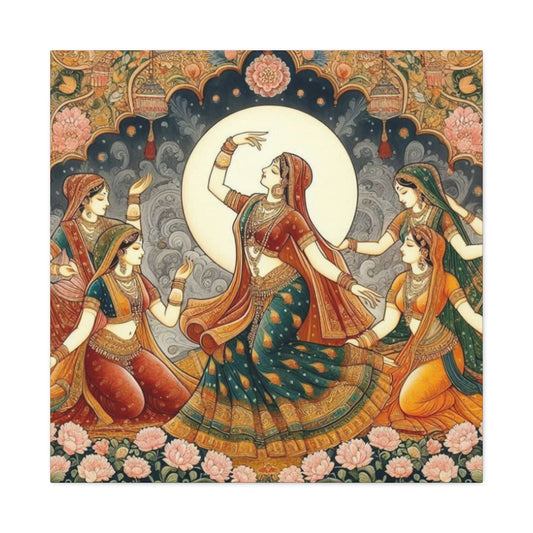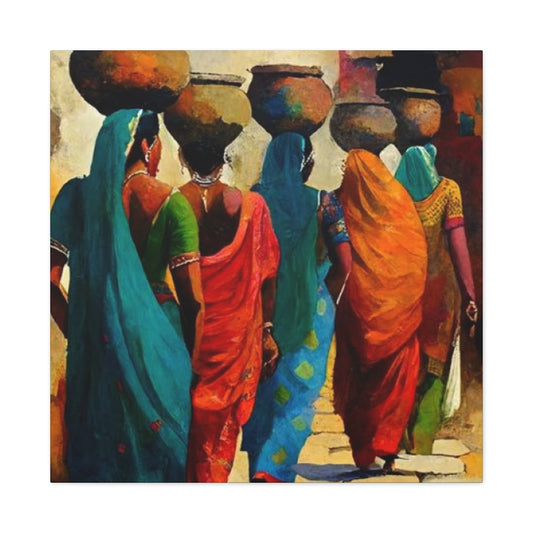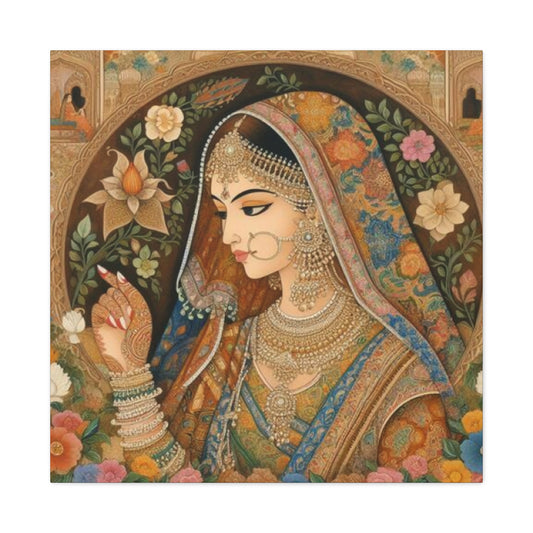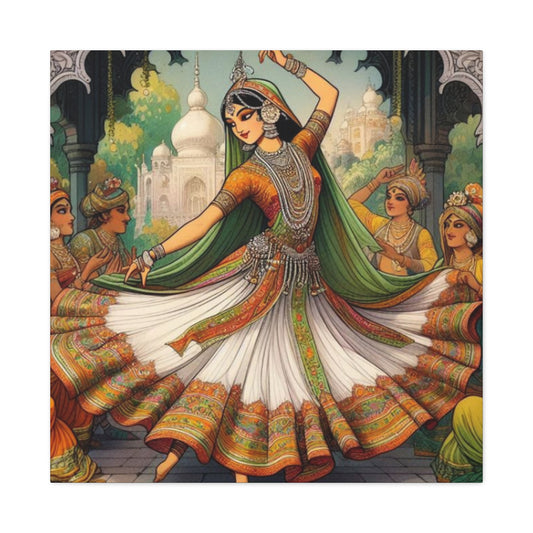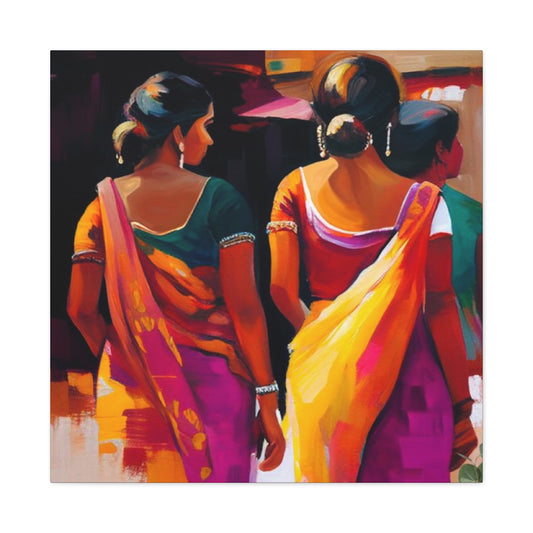Once the undisputed choice of serious photographers, DSLR cameras have shaped modern digital photography for decades. Though the spotlight has shifted in recent years toward mirrorless systems, DSLRs haven’t faded into irrelevance. In fact, for many enthusiasts, learners, and budget-conscious creatives, DSLRs remain a smart and practical option in 2025. If you're trying to understand what sets DSLR cameras apart, how they operate, and whether they’re still worth considering today, this guide offers an in-depth explanation designed for absolute beginners and curious minds alike.
What Exactly Is a DSLR Camera?
A Digital Single-Lens Reflex camera, or DSLR, is a device that allows photographers to capture high-quality images using a unique mechanical and optical design. It uses a digital imaging sensor to record photos—unlike traditional SLRs which used rolls of photographic film. The term “single-lens” indicates that the camera uses one lens for composing, focusing, and capturing images. This differs from older systems like rangefinders, where separate optics were used for viewing and shooting. With DSLRs, what the photographer sees through the viewfinder is the precise scene that will be captured by the sensor. The word “reflex” refers to the mirror mechanism inside the camera. This mirror redirects light from the lens up into an optical viewfinder, allowing you to preview your shot optically—free of digital processing, lag, or delay.
How Does a DSLR Camera Actually Work?
Understanding the inner workings of a DSLR can help you grasp why it's been such a reliable tool for decades. A DSLR camera consists primarily of a camera body and a detachable lens. These two components form a flexible photographic system that caters to both artistic and technical demands. Here’s a simplified flow of how light travels inside a DSLR: Light enters the lens, which focuses the rays according to the aperture and focal length selected by the photographer. This light hits a reflex mirror angled at 45 degrees. Most of the light is reflected upward toward a pentaprism or pentamirror. The pentaprism then redirects the light to the optical viewfinder, allowing the photographer to see an accurate optical representation of the scene. In models with autofocus capabilities, a portion of the light passes through a partially transparent mirror to a secondary mirror and then down to a dedicated autofocus sensor. When you press the shutter button, the main mirror flips up and the mechanical shutter opens, exposing the digital image sensor to light. After the exposure is captured, the shutter closes, and the mirror returns to its position, ready for the next shot. This entire sequence happens within milliseconds, giving DSLRs their distinctive mechanical feel and sound—something many photographers still enjoy for its tactile feedback.
Why a DSLR Camera Still Makes Sense in 2025
Although modern camera technology is increasingly dominated by mirrorless systems, DSLR cameras remain a compelling and practical option for many photographers in 2025. Whether you're an aspiring creator, a hobbyist looking to upgrade from smartphone photography, or someone who appreciates hands-on learning, DSLRs still bring significant value to the table.
While the photography industry evolves rapidly, the core strengths of DSLR systems—optical clarity, dependable ergonomics, unmatched lens compatibility, and proven durability—are difficult to ignore. These attributes continue to resonate with photographers who prioritize control, reliability, and affordability in a digital world where devices are becoming smaller but often more dependent on software automation.
Let’s explore the advantages of DSLR cameras in detail and understand why they still deserve consideration this year.
Optical Precision Without Delay
One of the defining features of a DSLR is its optical viewfinder, which offers a direct line of sight through the lens. Unlike electronic viewfinders found on mirrorless cameras, a DSLR's viewfinder is free from lag, color distortion, or refresh rate issues. You're viewing the scene as it truly is, not through a digitally processed screen.
This can be invaluable in low-light situations or high-speed shooting scenarios where real-time responsiveness matters. Whether you're capturing a fleeting facial expression during a wedding or waiting for the perfect lighting during golden hour, the optical viewfinder ensures complete accuracy and real-world visual feedback.
Photographers who have spent years relying on optical systems often find them more natural and less fatiguing for the eyes. There’s a certain tactile confidence that comes with knowing what you see is exactly what your camera lens is seeing.
Designed for Hands-On Control
DSLR bodies are known for their comfortable grips and thoughtfully laid-out controls. Their larger size isn’t just for show—it allows for better physical interaction. Most models feature dedicated dials and buttons for key settings like ISO, white balance, aperture, and shutter speed.
This physical feedback is especially beneficial for beginners who want to learn manual photography. Adjusting settings with tangible inputs rather than touchscreen menus helps reinforce an understanding of exposure, composition, and lighting. It also makes operation faster and more intuitive, especially in scenarios that require quick adjustments such as sports, wildlife, or documentary photography.
Advanced users also appreciate being able to customize buttons and configure presets tailored to specific shooting needs. This depth of control is something that lighter, touchscreen-focused mirrorless cameras can sometimes sacrifice in the name of minimalism.
A Legacy of Lens Versatility
One of the most powerful advantages of choosing a DSLR system is the unparalleled ecosystem of interchangeable lenses. With mounts like Canon’s EF and Nikon’s F, photographers gain access to an immense catalog of glass—spanning decades of development and refinement.
Whether you’re after ultra-wide landscape lenses, razor-sharp macro optics, or portrait primes with stunning bokeh, there’s a lens available at every budget and quality level. Third-party lens manufacturers like Sigma, Tamron, and Tokina further expand your choices, offering competitive alternatives that often rival native brand lenses.
Moreover, older lenses from previous decades often maintain full or partial compatibility with newer DSLR bodies. This backward compatibility lets photographers build out a cost-effective yet high-performance lens lineup over time. Mirrorless cameras, by comparison, sometimes require adapters that may limit performance or add bulk.
With DSLRs, you can mix and match based on your creative needs without being tied to a single generation of products.
Built to Last in Real-World Conditions
When it comes to reliability, DSLRs have a solid reputation for withstanding the rigors of professional use. Most models are constructed with robust materials such as magnesium alloy or high-strength polycarbonate. This makes them well-suited for outdoor photography, travel, and environments where a compact camera might falter under stress.
Weather sealing on many mid- and high-end DSLR models protects the internals from dust, moisture, and temperature fluctuations. This rugged design ensures you can keep shooting in conditions that would pose risks to more fragile devices.
In addition to their physical resilience, DSLRs boast impressive battery life. A single charge can often power a DSLR for 800 to 1500 shots, significantly outperforming mirrorless cameras, which typically require frequent charging due to their electronic viewfinders and continuous LCD use. For photographers covering events, weddings, or extended shoots, this efficiency becomes a significant operational advantage.
Cost-Efficient Access to Professional Quality
As the market pivots to mirrorless technology, prices for DSLR cameras and lenses have become more attractive than ever. You can now find new or slightly used DSLR bodies with professional-grade capabilities at a fraction of their original cost. For those entering the photography world, this presents a golden opportunity to build a complete system—camera, lens, and accessories—without the premium price tag.
Additionally, learning photography on a DSLR often leads to a better grasp of fundamental principles. The clear separation of functions, tactile controls, and visual feedback help cultivate an understanding of light, exposure balance, and creative composition.
When paired with high-quality lenses, even entry-level DSLR bodies can produce results that rival those of more expensive mirrorless systems. This scalability means you can start small and upgrade gradually, all while building skills and refining your style.
A System That Grows With You
DSLRs are incredibly scalable. Beginners can start with automatic modes and gradually move into full manual control. The platform accommodates everything from casual snapshots to high-stakes commercial photography.
Photographers can expand their toolkit with a variety of accessories—external flashes, battery grips, remote triggers, intervalometers, and more—all of which are widely available for DSLR systems. The platform supports various photography genres, including portraiture, product, landscape, wildlife, and astrophotography.
In terms of education, the DSLR format encourages learning. Since you’re often required to work more deliberately—managing focus points, exposure, and white balance manually—it accelerates your growth as a photographer and deepens your understanding of your tools.
Time-Tested Technology With Enduring Value
Even though major brands like Canon and Nikon have shifted their research and development to mirrorless systems, they have not abandoned DSLR support. A wealth of firmware updates, third-party accessories, and replacement parts keeps these systems functional and competitive.
The camera bodies themselves are engineered for longevity. Many mid-range DSLRs are rated for over 100,000 shutter actuations, while flagship models can exceed 200,000. For everyday and semi-professional use, this kind of durability ensures years of consistent performance without the pressure of upgrading every couple of seasons.
What Are the Drawbacks of a DSLR Camera?
Despite their legacy of excellence and widespread use, DSLR cameras are not without limitations. While they continue to offer impressive image quality, manual control, and compatibility with a vast array of lenses, several practical disadvantages have become more noticeable—especially as mirrorless technology advances.
For photographers considering a DSLR in 2025, understanding the potential shortcomings is essential. Whether it’s the physical size of the gear, mechanical components that can wear down, or limitations in live feedback, DSLR systems may not suit every shooting style or user preference. Let’s take a deeper look at the key disadvantages of DSLR cameras in the current photographic landscape.
Larger Size and Increased Weight
One of the most common concerns with DSLR cameras is their bulk. The inclusion of a reflex mirror, pentaprism or pentamirror, and optical viewfinder system requires additional internal components. This mechanical complexity inevitably makes DSLR bodies larger and heavier than most mirrorless alternatives.
While the solid build can be advantageous in certain scenarios—such as studio work or rugged outdoor conditions—it becomes a burden for photographers who prioritize mobility. Travel photographers, urban explorers, vloggers, and street shooters often prefer lightweight systems that allow them to move discreetly and avoid fatigue during extended use.
Carrying a full DSLR setup, especially with multiple lenses, can be cumbersome. Even mid-range models combined with telephoto or fast aperture lenses can quickly become impractical for spontaneous or handheld shooting. For those who value portability, this added weight may be a deciding factor against choosing a DSLR.
Limited Live View and Display Feedback
A key difference between DSLR and mirrorless cameras lies in how images are previewed and composed. DSLRs utilize optical viewfinders that show a real-time view through the lens via the reflex mirror. While this provides an unprocessed and immediate view of the scene, it lacks one critical advantage: digital feedback.
When using the optical viewfinder, you can’t see exposure adjustments, depth-of-field previews, or real-time histograms. To access those tools, you must switch to Live View mode, which uses the LCD screen and bypasses the mirror mechanism. However, Live View on most DSLRs is relatively slow and drains the battery more quickly. Autofocus performance also tends to drop in this mode, particularly on older models.
In contrast, mirrorless systems display everything through an electronic viewfinder or rear screen—including simulated exposure, white balance changes, creative filters, and focus peaking. For beginners or hybrid photo-video shooters, this live feedback enhances usability and helps avoid exposure mistakes in the field.
The slower, less responsive Live View mode on DSLRs can be a limiting factor for those who rely heavily on screen-based composition, including content creators and macro photographers who often shoot from unconventional angles.
Mechanical Complexity and Wear Over Time
Another inherent drawback of DSLR cameras is their reliance on mechanical components. The mirror box and mechanical shutter must move precisely and rapidly every time a photo is taken. While these parts are built to be durable, they are still subject to physical wear and eventual failure—especially in entry-level or heavily used models.
Each shutter actuation counts against a camera’s rated lifespan. Mid-range DSLRs are often rated for 100,000 to 150,000 shutter cycles, while professional-grade models may exceed 200,000. However, once those limits are approached or exceeded, the cost of replacing the shutter assembly or repairing the mirror mechanism can be significant.
Mirrorless systems, by contrast, have fewer moving parts. Many use electronic shutters, which virtually eliminate mechanical wear and allow for silent shooting. This reduced complexity not only extends the operational life of the camera but also improves reliability in harsh environments.
For photographers who shoot high volumes—such as event professionals or wildlife enthusiasts—a DSLR’s mechanical constraints may require more careful planning around maintenance and longevity.
Autofocus Alignment Issues
DSLR autofocus is traditionally handled by a separate phase-detection sensor located beneath the reflex mirror. This setup generally performs well in daylight and with center-weighted focus areas. However, because the autofocus system is independent of the image sensor, calibration discrepancies can occur.
These misalignments—known as front-focusing or back-focusing—can be especially problematic when using wide-aperture lenses where depth of field is shallow. In such cases, the focus point may appear to be on the subject through the viewfinder but actually lands slightly in front of or behind it in the final image.
Correcting these issues often requires fine-tuning focus through a process called microadjustment, which may be unavailable or complex on certain camera models. In severe cases, calibration must be done professionally, which can be costly and time-consuming.
Mirrorless cameras use on-sensor autofocus systems, which eliminate this problem entirely by focusing directly where the image is recorded. This shift in focus technology has helped mirrorless systems gain the edge in focus precision—particularly in genres like portrait photography or low-light shooting.
Slower Technological Updates
Since the mid-2010s, most research and development in digital photography has shifted toward mirrorless platforms. As a result, DSLR systems now receive fewer firmware updates, limited feature enhancements, and reduced compatibility with newer technologies.
For example, advanced features like in-body image stabilization, real-time subject tracking with AI, and enhanced video tools like 10-bit internal recording are typically absent in DSLRs. While this doesn’t affect basic photography use, it does mean that DSLR users may miss out on emerging innovations designed to improve creative flexibility.
Moreover, many third-party lens manufacturers are prioritizing mirrorless mounts for their latest releases. Over time, this may reduce the availability of new, cutting-edge lenses designed specifically for DSLR systems.
Less Competitive in Hybrid Shooting
As content creation evolves, many photographers now engage in hybrid shooting—capturing both photos and high-quality video. While DSLRs can shoot video, their video capabilities are often outdated compared to modern mirrorless systems.
Features like 4K recording at high frame rates, focus tracking during video, and advanced microphone integrations are often more refined in mirrorless cameras. DSLRs may also suffer from longer record-start times, lack of focus aids like peaking or zebras, and limitations in live HDMI output.
For those who prioritize video production or need to switch fluidly between stills and motion content, these shortcomings can limit creativity and workflow efficiency.
Mirrorless and Compact Alternatives for Beginners
As the digital photography landscape has transformed over the past decade, the dominance of DSLR cameras has gradually given way to newer, more compact, and user-friendly technologies. For beginners stepping into the world of photography in 2025, two particularly viable alternatives to traditional DSLRs are mirrorless interchangeable-lens cameras and point-and-shoot compact cameras. These two categories serve different needs and experience levels but are both capable of delivering outstanding results while catering to the modern photographer’s lifestyle.
Mirrorless Interchangeable-Lens Cameras (MILCs)
Mirrorless cameras have redefined how both amateur and professional photographers approach imaging. Unlike DSLRs, these cameras do not rely on a mechanical mirror system to reflect light into an optical viewfinder. Instead, they use electronic viewfinders or rear LCD screens to display exactly what the camera’s sensor captures. This design eliminates bulk and allows for slimmer and lighter camera bodies, making them ideal for users who prioritize portability without compromising image quality.
The speed and accuracy of autofocus systems in mirrorless models are among the most compelling reasons beginners opt for this type of camera. By utilizing phase-detection or contrast-detection pixels built directly into the sensor, mirrorless cameras offer near-instant focusing capabilities. Advanced subject tracking, face detection, and eye autofocus are now standard in many entry-level and mid-range mirrorless models. These features allow users to focus more on framing and creativity while the camera handles precision tasks in the background.
Real-time exposure preview is another standout advantage. On a mirrorless camera, users can see exposure changes directly on the screen or viewfinder as they adjust aperture, ISO, or shutter speed. This live feedback helps new photographers quickly understand how camera settings influence the final image. The result is a significantly shorter learning curve compared to traditional systems that rely on trial-and-error and reviewing images post-capture.
Many mirrorless cameras also include in-body image stabilization, which is particularly beneficial for handheld shooting in low light. This technology compensates for minor hand movements and allows for sharper images at slower shutter speeds, minimizing the need for tripods in casual shooting situations. The added stabilization also enhances video recording, helping deliver smoother footage for vloggers and content creators.
Video functionality is another major strength. Most mirrorless systems support 4K video and include high-bitrate recording, external microphone inputs, and focus peaking, making them excellent tools for hybrid shooters. Some models even feature log profiles for advanced color grading and internal 10-bit video capture, giving creators more flexibility in post-production.
Lens versatility is another factor that makes mirrorless cameras attractive to beginners. Leading brands like Sony, Fujifilm, Nikon, and Canon have developed extensive lens ecosystems for their mirrorless mounts. These include everything from ultra-wide-angle lenses for landscapes to fast portrait primes and macro lenses for detailed close-up work. Additionally, many mirrorless bodies support legacy DSLR lenses via adapters, allowing users to access older glass without giving up modern functionality.
Ergonomically, mirrorless cameras are evolving quickly. Manufacturers are designing intuitive user interfaces, customizable function buttons, and high-resolution touchscreens. Features such as Bluetooth connectivity, wireless image transfer, and mobile control apps make it easier than ever to share images or operate the camera remotely. These smart integrations appeal to younger users and those who want to streamline their workflow for social media or content publishing.
Point-and-Shoot Cameras
While mirrorless systems offer professional-grade tools and future-proof capabilities, compact cameras provide simplicity and convenience in a remarkably small package. Often referred to as point-and-shoot cameras, compact models are designed for users who want a stress-free photography experience. These cameras are known for their portability and fast operation, making them ideal for casual shooting, travel, or everyday documentation.
Modern point-and-shoot cameras are a far cry from their early predecessors. Many of today’s compact cameras feature surprisingly large sensors, fast fixed lenses, and advanced processing power. For example, some premium compacts now include one-inch or even APS-C sensors, which significantly improve image quality, especially in low light. These larger sensors offer better dynamic range, color depth, and noise control—key attributes for producing professional-looking photos without bulky gear.
One of the primary benefits of a compact camera is its all-in-one design. The fixed lens and integrated body are optimized to work together, resulting in fast performance and minimal setup. Because these systems are streamlined, there’s no need to worry about lens changes, sensor dust, or technical configuration. This makes compact cameras perfect for travelers, family photographers, vloggers, and anyone who values spontaneity and discretion.
Despite their small size, many compact cameras come with features typically found in larger systems. These include RAW shooting, manual control modes, burst shooting, touchscreen operation, and built-in ND filters. Some even offer optical zoom lenses with wide focal ranges, giving users the ability to shoot wide-angle landscapes and zoomed-in details with the same device. For street photographers or visual storytellers working in fast-paced environments, the quiet shutter and unassuming form factor of a compact camera are invaluable.
Video capabilities in compact cameras have also improved significantly. Many now support 4K resolution with high-quality audio input, stabilization, and autofocus systems that rival those in mirrorless cameras. These tools enable content creators to record professional-grade video with minimal equipment, which is especially useful for travel vlogging, behind-the-scenes footage, or run-and-gun productions.
While compact cameras lack the expandability and sensor size of mirrorless or DSLR systems, they make up for it in ease of use and accessibility. The simplicity of a fixed-lens system can help users stay focused on composition, storytelling, and timing rather than technical adjustments. For those who are just beginning their photographic journey, a compact camera can serve as a valuable stepping stone toward more advanced gear in the future.
Making the Right Choice
Choosing between mirrorless and compact cameras ultimately depends on the user’s goals, preferred subjects, and willingness to engage with manual controls. Mirrorless cameras are ideal for those who want room to grow, experiment with different lenses, and develop both photography and video skills. They offer the power and flexibility of a professional system with the compact form factor that today’s creatives demand.
Compact cameras, on the other hand, are well-suited for users who value portability, simplicity, and speed. They are an excellent choice for travel, lifestyle, or documentary photography where minimal gear is preferred. With high-quality sensors and intuitive operation, compact cameras prove that you don’t need a complex system to capture stunning images.
Is Investing in a DSLR Still Worth It Today?
As the photography industry continues to evolve rapidly, the question on many aspiring photographers' minds is whether a DSLR camera is still a smart investment in 2025. With the rise of mirrorless systems and major manufacturers shifting their attention away from traditional DSLR lines, it's understandable why some may hesitate. However, the reality is that DSLR cameras remain a valuable and relevant choice, especially for those looking to build a solid foundation in photography.
Learning Value and Manual Control
One of the primary advantages of investing in a DSLR today lies in its educational value. DSLRs are known for their tactile and deliberate design, offering full manual control over exposure settings like aperture, shutter speed, and ISO. Unlike smartphones or point-and-shoot cameras that often do most of the thinking for you, DSLRs encourage users to engage with the technical aspects of photography. For beginners who want to genuinely understand the core principles behind great images, this hands-on approach is invaluable.
Optical Viewfinder Experience
The optical viewfinder in a DSLR offers another significant learning benefit. Unlike electronic screens that simulate exposure, an optical viewfinder shows you a real-world, unprocessed view of your scene. This allows you to rely on your judgment and understanding of light, rather than digital previews, to create accurate and well-composed shots. While mirrorless cameras provide live feedback, learning to work without that safety net can sharpen a photographer’s intuition and technical confidence.
Lens Ecosystem and Compatibility
Another reason DSLRs continue to make sense in 2025 is the vast ecosystem that supports them. Decades of development have resulted in an enormous library of compatible lenses, accessories, and learning resources. Popular mounts such as Canon EF and Nikon F offer thousands of lens options across all focal lengths and price points. From ultra-wide landscape lenses to telephoto wildlife glass, the selection is unmatched in terms of variety and affordability.
Support and Availability of DSLR Gear
Even though Canon and Nikon have ceased development of new DSLR models, their legacy systems remain fully functional and widely supported. Many accessories, such as flashes, battery grips, wireless remotes, and tripods, are readily available and compatible with a range of DSLR bodies. Additionally, lens adapters and third-party manufacturers ensure continued innovation and usability within the DSLR format. It’s a platform with deep roots and enduring functionality.
Affordability and Value for Beginners
Affordability is another factor that keeps DSLRs attractive, particularly for budget-conscious creators. Because the industry is pivoting toward mirrorless systems, prices on DSLR cameras and lenses have dropped significantly. This makes it easier than ever to assemble a high-quality kit without breaking the bank. For example, a used or refurbished DSLR body combined with a couple of versatile lenses can cost significantly less than a mid-range mirrorless setup.
Battery Life and Reliability
Battery performance is often overlooked when comparing camera systems, but it's an area where DSLRs still have an edge. Because optical viewfinders don’t rely on power-hungry screens, DSLR batteries often last for hundreds, if not thousands, of shots on a single charge. This is particularly beneficial for event photographers, travelers, and those who shoot long sessions without convenient access to power.
Durability and Image Quality
In terms of durability, DSLR bodies are built to last. Many models feature weather-sealed construction, magnesium alloy frames, and rugged buttons and dials that can withstand challenging environments. For outdoor photographers, sports shooters, or anyone working in unpredictable conditions, a DSLR provides peace of mind through its solid build quality. Additionally, DSLR sensors—ranging from APS-C to full-frame—continue to deliver outstanding image quality. These sensors capture rich detail, wide dynamic range, and accurate color rendering, making them fully capable of producing professional-level results.
Focused Shooting Experience
One should also consider the benefit of a more focused experience. DSLRs tend to strip away some of the digital distractions that come with touchscreen-heavy interfaces or overly complex menu systems. For many photographers, especially those learning the craft, this more deliberate and intuitive workflow can foster a stronger connection to the creative process.
Secondhand Market Opportunities
Used and refurbished DSLR gear also offers an accessible entry point into more advanced photography. Secondhand markets are thriving, and many previously high-end DSLR models can now be purchased at a fraction of their original cost. These include cameras that were once used by professionals and still offer outstanding performance, giving beginners access to gear that might otherwise be beyond their budget.
Long-Term Learning Benefits
The learning curve associated with DSLRs also prepares photographers for working with more complex systems in the future. Once you understand how to manually control exposure, focus, and white balance, transitioning to more modern cameras becomes much easier. In essence, a DSLR can serve as both a starting point and a long-term creative companion.
Continued Relevance for Existing Users
Moreover, for those who already own DSLR equipment, continuing to invest in the system makes practical sense. Buying compatible lenses or accessories extends the value of existing gear and avoids the added cost of switching platforms. Lens adapters do exist, but using native gear is usually simpler, more consistent, and more cost-effective.
Rich Learning Resources and Community
In terms of education and community, DSLR users benefit from a wealth of learning materials, online tutorials, and community support. From forums and social media groups to workshops and video courses, countless resources cater to DSLR users, helping them make the most of their equipment and refine their skills at every level.
Final Verdict: Should You Start with a DSLR Camera in 2025?
For anyone passionate about learning photography from the ground up, a DSLR is still one of the most rewarding systems to begin with. It teaches the core disciplines—light control, manual settings, lens selection, and framing—through an intuitive and tactile interface. That said, if you prioritize features like compact size, silent shooting, or real-time screen previews, a mirrorless camera might better suit your style. These systems are the future of photography, and for certain genres—like video content creation or high-speed sports—mirrorless models may offer better performance. But DSLRs remain far from obsolete. With unmatched access to legacy lenses, robust bodies, and optical clarity, they are a testament to the timeless principles of photography. Whether you're capturing portraits, landscapes, events, or creative projects, a DSLR provides both the technical depth and creative freedom to grow your skills.











